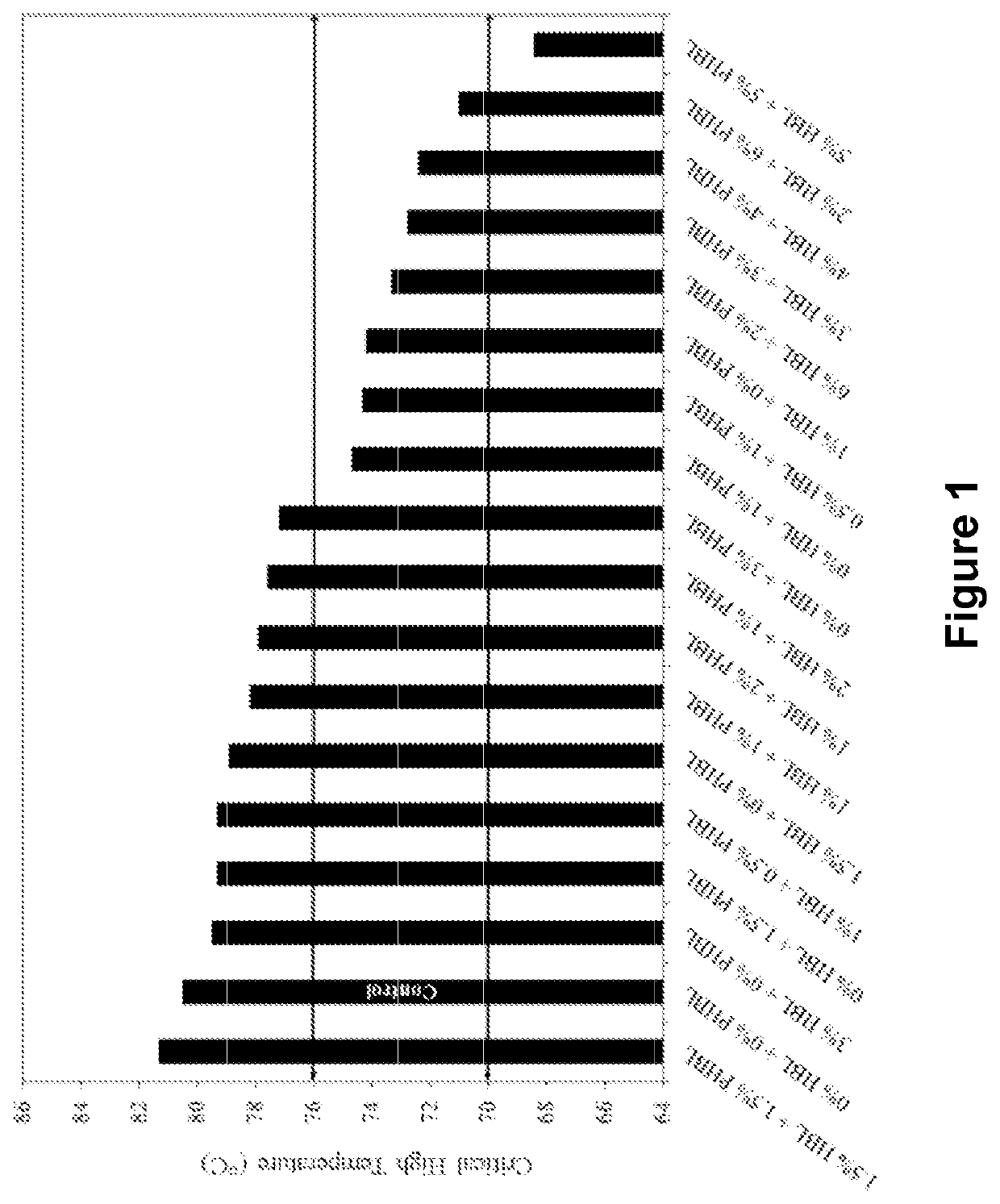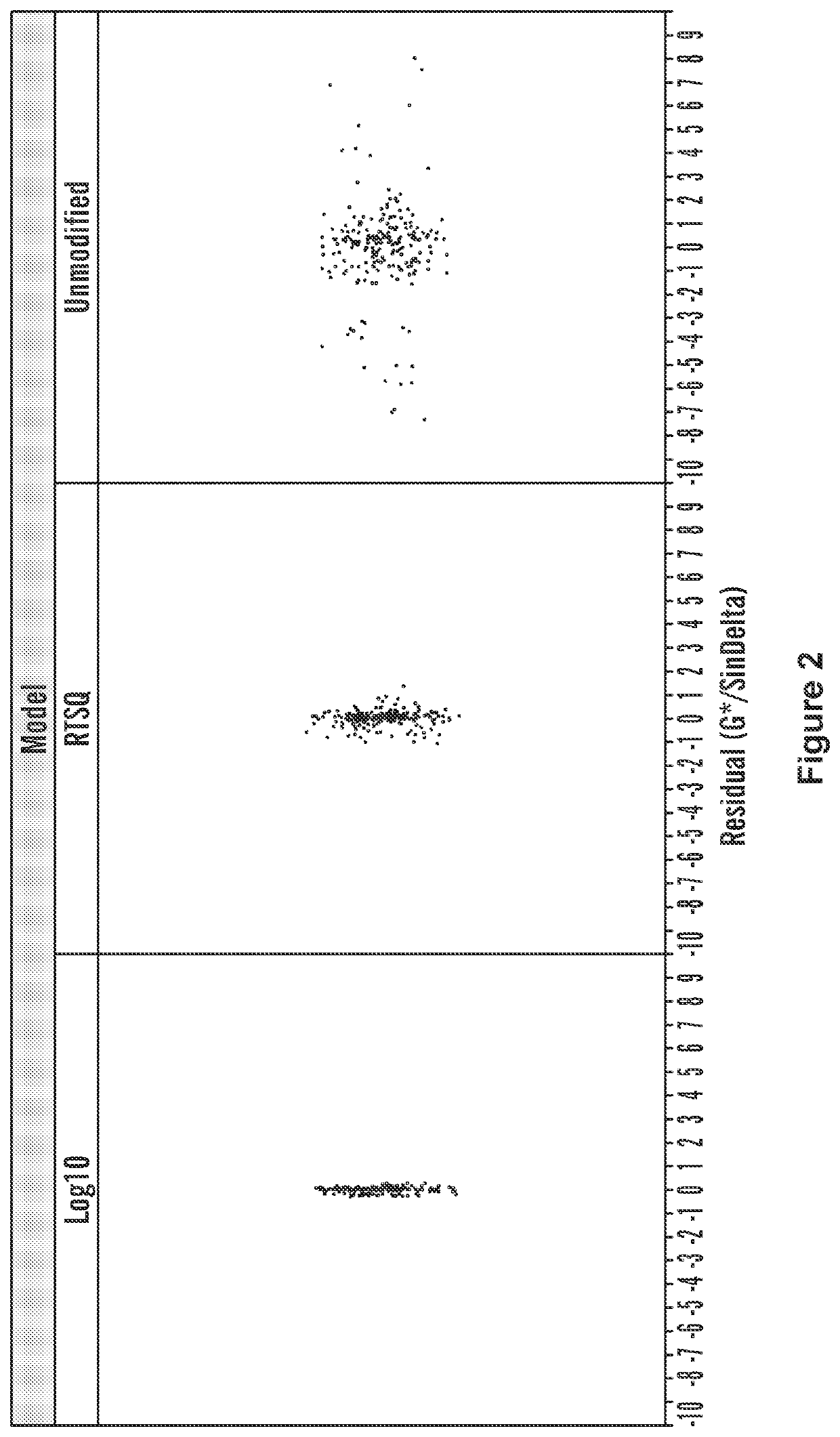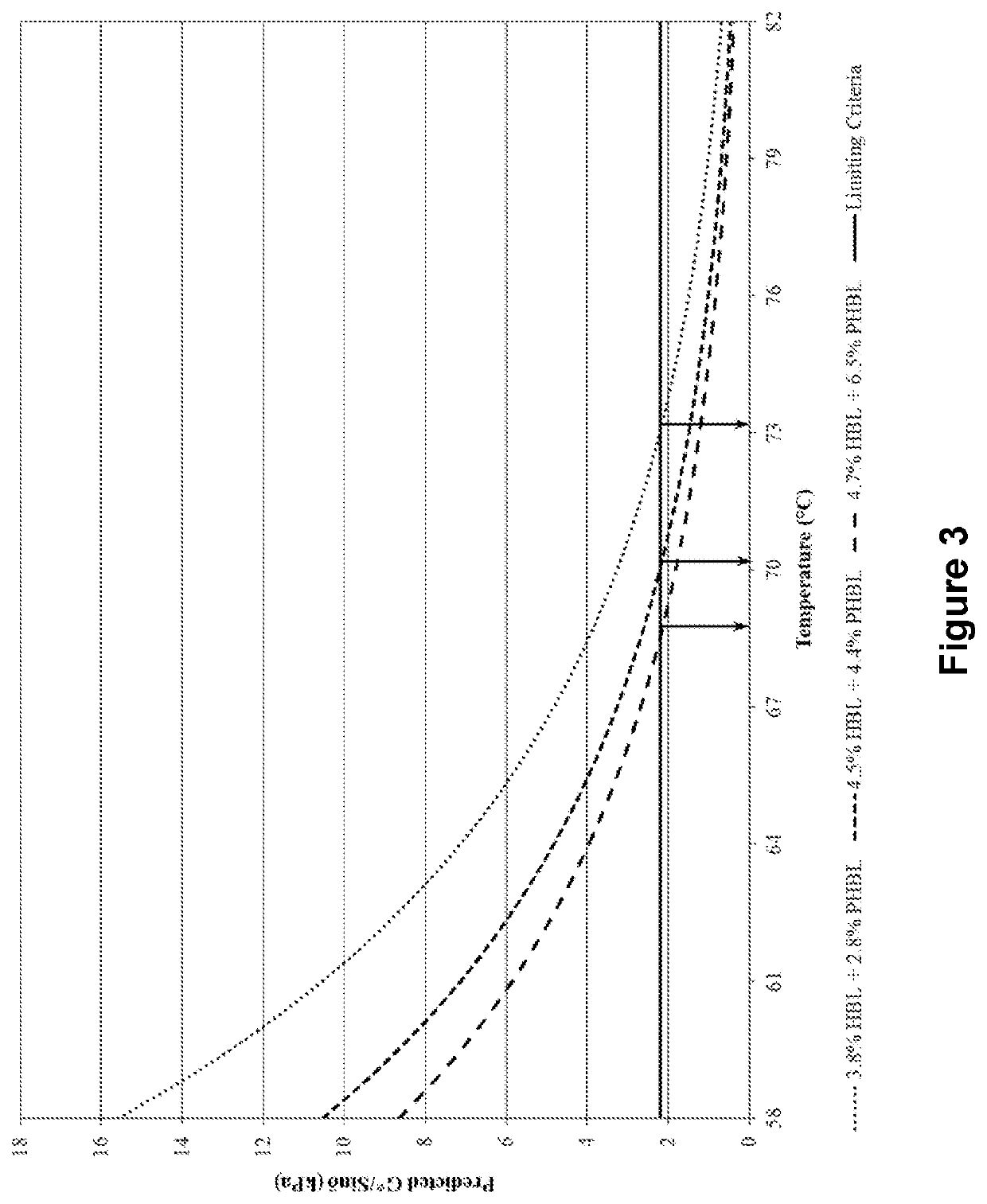Rejuvenation of vacuum tower bottoms through bio-derived materials
a technology of bio-derived materials and vacuum tower bottoms, which is applied in the direction of in situ paving, building components, roads, etc., can solve the problems of shortening affecting the service life of pavements, so as to improve the low temperature performance of stiff vtb, improve the service life, and reduce the effect of stiffness
- Summary
- Abstract
- Description
- Claims
- Application Information
AI Technical Summary
Benefits of technology
Problems solved by technology
Method used
Image
Examples
example 1
and Methods
[0113]In this research work, one source of vacuum tower bottoms (“VTBs”) from an Illinois refinery was used. VTBs are a very stiff form of asphalt binder, and typically have a penetration grade of 20-30 and a performance grade (PG) of PG 76-10. Two bio-derived materials from linseed oil were used—Heat Bodied Linseed Oil (“HBL” or “HBO”) and Partially Hydrogenated Heat Bodied Linseed Oil (“PHBL” or “PHBO”)—at addition rates between 0% and 6% to create a total of eighteen combination groups. The properties for the HBL and PHBL bio-derived materials (“BDMs”) are shown in Table 1.
[0114]
TABLE 1Properties of BDMs HBL and PHBLHBLPBBLPhysical FormAmber liquidSolid pasteSpecific Gravity at1.021.0525° C. (77° F.)Molecular Weight3,4003,400(Mn) [Da]Tg [° C.]−17.91−24.89, 16.25Melting Temp. [° C.]—42.92Shear Rate (1 / S)Shear Rate (1 / S)Viscosity (Pa · S)5010015050100150at 25° C. (77° F.)3.573.563.5452.642.2436.35at 35° C. (95° F.)2.112.092.0627.922117.75at 45° C. (113° F.)1.21.191.189.2...
example 2
eparation and Experimental Testing Plan
[0115]Sample Preparation—To prepare samples for testing, BDMs were blended with the VTB at 155° C.±10° C. at 3000 rpm for one hour using a Silverson shear mill. After all blending combinations were created, the materials were then short term aged in a Rolling Thin Film Oven (“RTFO”) and material was reserved for Dynamic Shear Rheometer (“DSR”) testing to determine the high-temperature grade. The remaining material was aged in a pressure aging vessel (“PAV”) for subsequent testing in a BBR for determining the low-temperature grade.
[0116]The high temperature grade of asphalt is important, because it measures the stiffness of the binder at high in-service temperatures. Adequate high-temperature binder properties are required to prevent permanent deformation or rutting. More specifically, the DSR characterizes the viscous and elastic behavior of high and intermediate temperatures for asphalt binders. DSR tests are conducted on unaged (original), sh...
example 3
al Transformations of Data and Multiple Regression Modeling
[0119]In order to ensure a full factorial experiment did not need to be carried out when rejuvenating VTBs, multiple regression models were developed to predict the final performance grade at both high and low temperatures.
[0120]To conduct a thorough statistical analysis towards the end goal of creating a reliable multiple regression model for predicting the high and low temperature performance grade of VTB blended with two BDMs, the data was examined in its unmodified state as well as transformed. The data was evaluated in its unmodified state, logarithm base 10 transformed state, and root square transformed state. The transformations were examined by comparing the calculated coefficient of determination and the adjusted coefficient of determinations for the finished multiple regression models for each set of transformed data. This was done for both high temperature performance grade DSR data as well as done for the low tem...
PUM
| Property | Measurement | Unit |
|---|---|---|
| temperature | aaaaa | aaaaa |
| viscosity | aaaaa | aaaaa |
| temperature | aaaaa | aaaaa |
Abstract
Description
Claims
Application Information
 Login to View More
Login to View More - R&D
- Intellectual Property
- Life Sciences
- Materials
- Tech Scout
- Unparalleled Data Quality
- Higher Quality Content
- 60% Fewer Hallucinations
Browse by: Latest US Patents, China's latest patents, Technical Efficacy Thesaurus, Application Domain, Technology Topic, Popular Technical Reports.
© 2025 PatSnap. All rights reserved.Legal|Privacy policy|Modern Slavery Act Transparency Statement|Sitemap|About US| Contact US: help@patsnap.com



